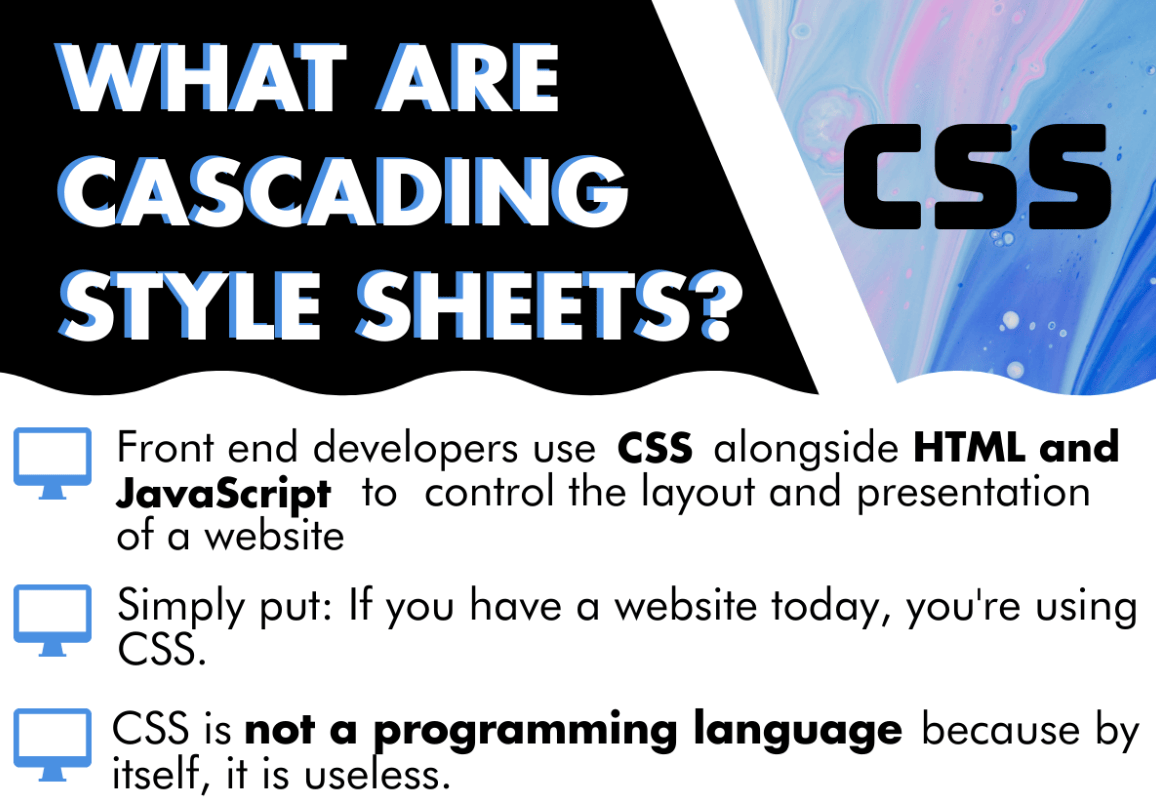
Welcome aboard, young web explorer! Today, we’re diving into the wonderful world of CSS, or as some call it, “Cascading Style Sheets.” So, what is CSS exactly? Well, let’s uncover the magic together!
Imagine you have a website that looks a bit plain and unexciting. CSS comes to the rescue to make it stylish and eye-catching! It’s like the fashion designer for websites. With CSS, you can change colors, fonts, sizes, and layouts to make your web pages look awesome!
But wait, there’s more! CSS also lets you make your website responsive, which means it can adapt to different devices, like smartphones and tablets. So, whether you’re viewing a site on a big computer screen or a tiny phone screen, CSS ensures everything looks flawless.
So, are you ready to unleash your creativity and transform your web pages into stunning masterpieces using CSS? Let’s dive right in and explore the exciting world of cascading style sheets! Get ready to bring some serious style to the web!
What is CSS: An Introduction to Cascading Style Sheets
Cascading Style Sheets, commonly known as CSS, is a fundamental component of web design and development. At its core, CSS is a styling language used to describe the look and formatting of a document written in a markup language like HTML. With CSS, web designers and developers can control the visual aspects of a webpage, enhancing its appearance and providing a more engaging user experience. In this article, we will explore the ins and outs of CSS, from its basic syntax to its powerful features and benefits.
Why CSS Matters: The Importance of Cascading Style Sheets in Web Design
CSS serves as a crucial element in web design for several reasons. Firstly, it allows for the separation of content and presentation, which promotes clean and organized code. This separation means that developers can easily update the appearance of a website without altering its underlying content, resulting in efficient web development and maintenance. Additionally, CSS provides a wide range of styling options and techniques, allowing web designers to create visually captivating and aesthetically pleasing websites. Whether it’s adjusting font styles, colors, layout, or animations, CSS offers endless possibilities to bring creativity to life on the web.
The Basics of CSS: Syntax and Selectors
CSS follows a specific syntax that consists of rules and declarations. A CSS rule consists of a selector and one or more declarations. The selector specifies which HTML elements the style should be applied to, while the declarations define the actual styles. Declarations are made up of a property and a value, separated by a colon.
There are different types of CSS selectors that allow developers to target elements in various ways. For example, the “element selector” selects all instances of a specific HTML tag, while the “class selector” targets elements with a specific class attribute. The “ID selector” is used to select elements with a unique identifier, and the “attribute selector” targets elements based on a specific attribute value. By combining these selectors, developers can apply styles to specific elements or groups of elements on a webpage, providing precise control over the appearance of the content.
Advanced CSS: Layouts and Positioning
One of the powerful features of CSS is its ability to control the layout and positioning of elements on a webpage. CSS provides different layout models such as the “box model” and “flexbox” that allow developers to create responsive and dynamic designs. The box model defines how each element is structured, with properties like padding, margin, border, and content. By manipulating these properties, developers can control the size and spacing of elements.
Another widely used technique is CSS positioning, which determines the placement of elements within a webpage. CSS offers different positioning options, including “static”, “relative”, “absolute”, and “fixed”. Each position type has its own characteristics and behaviors, enabling developers to create complex layouts and precise position elements on the screen.
CSS and HTML: Working Together for Seamless Web Development
CSS and HTML are two components that are essential for successful web design. HTML provides the structure and content, while CSS handles the presentation and styling of a webpage. By combining the two, web designers and developers can develop webpages that are both visually appealing and functional. Each language has its own strengths and weaknesses, and when they are used together, the two create a harmonious balance between aesthetics and functionality for an optimal user experience.






